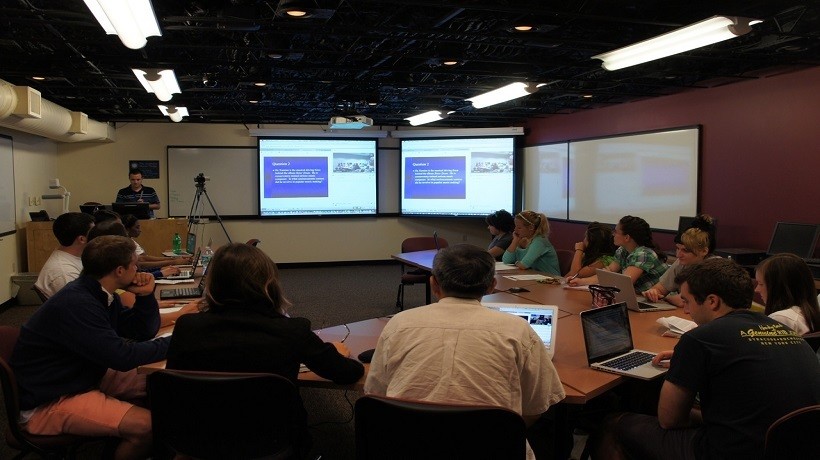Blended Learning At College: Advantages And Disadvantages
Blended classrooms are designed to meet personal learning needs of every college student by allowing tutors to formulate personalized educational strategies and instructions. Blended learning is implemented not only at colleges, but also on any grade level. It combines both – face to face and online communication between learners and educators. Due to this combination, students can work with tutors when they are at school, as well as use additional online resources at home. In class they can ask teachers for some help, and work on their projects and papers at home, using online materials. Having these materials at hand, they also use online methods of communication with teachers to get support and advice outside of the class. As Laura Lloyd Smith suggests in her Exploring the Advantages of Blended Instruction at Community Colleges and Technical Schools, study materials available in a variety of formats can help maximize a learner’s engagement. So generally, this approach leaves more space for students’ creativity and allows to dive deeper into subjects. However, this method also has some limitations. The successful realization of blended learning at college depends on a number of factors.
As a matter of actual practice, blended learning requires a different percentage of online and in-class settings. It turns out that not all learners engaged in blended learning have a sufficient level of motivation to study. For this segment of students blended learning is a weak method since motivation is a critical factor here. Managing motivation and creating a personal curriculum for every student sometimes becomes a real problem.
Now, let’s get into more details of positive and negative sides of blended learning.
Pros Of Using Blended Learning At College
1. Individualized Support For Students.
As we have already mentioned, the strongest side of blended learning is an opportunity to give personalized instruction to every student, which caters their needs.
2. Students Have Access To Helpful Online Materials Anywhere And At Any Time.
Modern technological devices allow trainers to reach students across the classroom and the globe.
3. Learners Can Benefit From All The Comforts Of Digital Materials.
These can include from scholarly libraries to online essays databases at any time they need.
4. Blended Learning Provides More Interactive Educational Experience.
Students have a chance to communicate with teachers using videoconferencing and other ways of communication. This adds to better collaboration between tutors and students.
5. Parents Have Access To what Their Children Are Doing.
This provides better support, communication, and control over the process.
6. It Gives Students Significantly More Time For Learning.
With blended learning, studying extends beyond the school day.
7. Educators Claim That This Method Shows Them How To Be “Better Teachers”.
According to the Some Benefits and Drawbacks of Blended Learning written by William Huntsberry for KQED News, college teachers claim that blended learning motivates them to create lessons on the fly, make plans for students individually, and help them learn.
Cons Of Using Blended Learning At College
1. The Technology Can Be Challenging Rather Than Useful.
One of the key issues is the technological literacy, which can be a real problem for teachers. Not all digital resources are reliable and easy to use.
2. Blended Learning Makes Teachers Overwork.
There is a great deal of additional work for teachers involved in all stages of blended learning. They have to broaden their horizons, pick the most suitable syllabus, and apply significantly more time and effort to find the right balance between online and face-to-face learning. Unfortunately, not all of them are willing to do so.
3. Students Can Experience Cognitive Load, Too.
With a great range of possibilities provided by the blended learning model, teachers may start overdoing with educational activities and content.
4. Credibility Of Sources And Plagiarism Become Even A Bigger Issue.
Having a digital-friendly educational environment may cause more plagiarizing from online resources. Moreover, there are a number of unreliable online resources that present false or misinterpreted facts.
Conclusion
As any other method, blended learning has its bright and dark sides. The combination of self-paced education and face-to-face training can be beneficial, but only when wisely applied. Sometimes there are risks to overbalance the rewards, because not all students are ready to stand on their own feet when it comes to learning. For some of them, this modern educational environment can be motivational, while the others feel confused about it.
However, we believe that the disadvantages of this strategy are more than overcomable. If teachers keep an eye on their students and provide strong support to them, more quality courses will be delivered. If you are passionate about what you are doing, you will always find your way. Read the article about effective blended learning strategies that worked to get more practical information on the topic.









